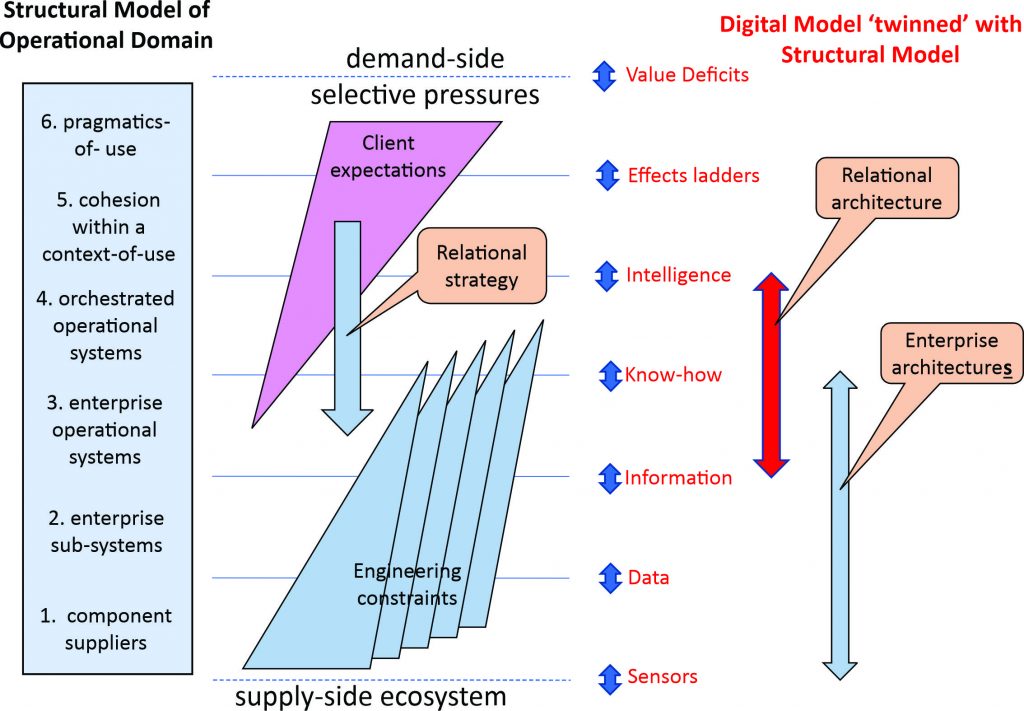by Philip Boxer
How does an enterprise create and capture value when the demand tempo – the tempo at which its client’s experience needs to change – is faster than the tempo at which the enterprise can integrate new capabilities. Operating at this demand tempo requires a relational strategy because the enterprise cannot expect to be able to satisfy the client’s expectations on its own. Instead, it must collaborate with other enterprises within a supply-side ecosystem defined by the engineering capabilities with which it must be able to interoperate at that demand tempo.

A relational architecture is one which can model the intelligence describing the forms of orchestration and synchronisation of capabilities required in a given client’s environment.[1] It relates this intelligence to the know-how which an enterprise and its collaborators have about providing capabilities and the relevant information on the performance of this know-how necessary to its effective delivery within the client’s environment – effective in the sense of the cohesive direct and indirect impact of that orchestration and synchronisation on the client’s ecosystem being valued by the client.
A relational architecture enables the digital modeling of the relation between the demand-side layers 3-6 of an enterprise’s coupling with a client’s environment and the supply-side layers 1-4 of its own and the other enterprises with which it will need to interoperate. This provides a basis on which an enterprise can sustain a relational strategy orchestrating and synchronizing its own capabilities with those of others collaboratively in order to address the expectations of its clients at the client’s demand tempo. It enables the enterprise to create and capture value competitively within a wider range of client environments as well as for its existing clients through bringing enhanced offerings to them faster and more effectively than would otherwise be possible.
[1] Why a digital model of a structural model of an operational domain? The conceptual or structural model of an operational domain is not in itself simulable, whereas the digital model is simulable. (See the relationship of conceptual or structural modeling to other types of modeling approach.) This distinction arises from understanding an enterprise as a living system.
A living system (Rosen 1991) is one that sustains a dynamic operational closure between four distinct kinds of process:
- Selection of demand-side value created
- Repetition of a temporally isolating boundary
- Maintenance of its current form
- An enabling supply-side transformation
There are four distinct ways in which this dynamic operational closure may be held. These correspond to the four forms of competitive dominance within a business ecosystem (See ‘strategy ceiling‘), which parallel the four to be found within a biological ecosystem (Kineman 2018).
Kineman, John J. 2018. ‘Four Kinds of Anticipatory (M-R) Life and a Definition of Sustainability.’ in R. Poli (ed.), Handbook of Anticipation (Springer Nature: Switzerland).
Rosen, R. 1991. Life Itself (Columbia University Press: New York).